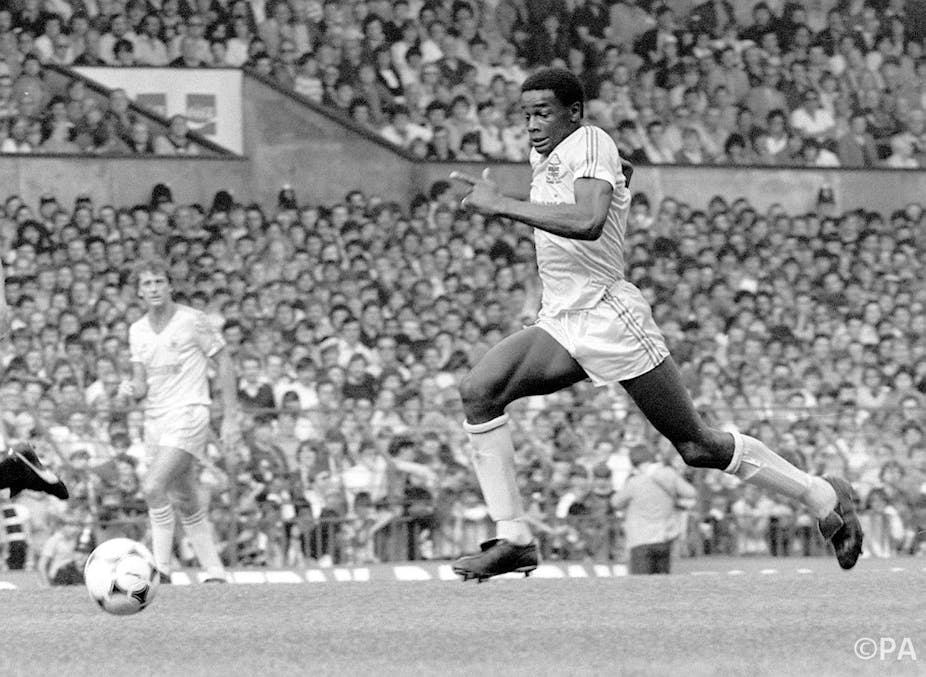As millions of people across the globe switch on their televisions to watch the FA Cup final many won’t know that the match coincides with the International Day against Homophobia and Transphobia (IDAHOT) that is marked on May 17 every year. Celebrating its tenth anniversary this year, IADAHOT is a worldwide campaign that aims to bring attention to the problem of homophobia and transphobia that persists across the world.
It might be worthwhile if more football fans knew about IDAHOT. No British sport has been associated with homophobic attitudes as much as football. A recent Channel 4 Dispatches programme, Hate on the Terraces, reinforced the idea that English football remains rife with discriminatory chanting by significant numbers of fans.
The documentary showed how such chanting was often carried out in full view and earshot of stewards and police with little action taken by them or the football authorities. The programme confirmed a 2013 study by the Gay Football Supporters Network (GFSN) that showed how Brighton fans were the target of regular and persistent homophobic abuse from opposition supporters.
The movie tag contains http://www.channel4.com/programmes/dispatches/videos/all/undercover-hate-on-the-terraces-clip-2, which is an unsupported URL, in the src attribute. Please try again with youtube or vimeo.
The perpetrators of abuse have not been confined to fans: in April 2014 former Blackburn Rovers player, Colin Kazim-Richards, was found guilty of making an “utterly disgusting” homophobic gesture at Brighton and Hove Albion fans.
Driven out (or worse)
From the playing side of the professional game, it is now commonplace to mention that no professional footballer has “come out” as gay while still playing in the English game. The fate of Justin Fashanu, who committed suicide in 1998 after declaring his homosexuality in 1990 to a barrage of homophobia from the media, has acted as a warning to other gay professionals not to follow in his footsteps.

In February 2013 the former Leeds United player, Robbie Rogers, came out as gay in the same breath as announcing his retirement from professional football because he could not conceive of continuing to play due to the homophobic atmosphere of the dressing room and terraces. Earlier this year former German international and Premier League star, Thomas Hitzlsperger, announced he was gay after he had retired from the game, although the positive public reception he received stands in stark contrast to Fashanu’s experience.
A famous victim of football’s inability to accept sexual diversity was Chelsea and England defender, Graeme Le Saux, who, although known to be heterosexual, became the target of homophobic abuse during his playing career in the 1990s. Le Saux’s case graphically illustrates one of the little-mentioned aspects of homophobic behaviour: the vast bulk of homophobic abuse is aimed at straight men.
It’s no joke
No-one actually believes that Brighton fans are gay, or that a player who falls down rather easily is “a poof”. Opposing fans sing: “Does your boyfriend know you’re here?” in order to call into question the gender credentials of the opposition supporters as a means of reinforcing their own ideas of a masculine heterosexuality. In other words, homophobic “banter”, whether perpetrated on the terraces or in the dressing room, acts as a mechanism for policing straight men’s sexuality.
In contrast to racist abuse where no-one would think of calling a white person by the “n” word, homophobia relies on the assumption that being thought of as gay is a culturally demeaned identity that needs to be constantly repudiated at all times. The argument that homophobia is like racism may be useful tactically to promote the importance of tackling homophobia. However, it is not the case that homophobia is like racism since it works in very different ways.
The fact that straight men experience the negative consequences of homophobia should not in any way be taken to mean that gay men do not suffer from homophobia. The tragic consequence of the cultural regime that devalues gay lives is that homophobia is not confined to the football arena but is present in every city, town and community in the country.
Homophobic attacks are a more violent means by which some men (it is usually, although not invariably, men who are the perpetrators) shore up their own narrow notions of their heterosexuality, or even attempt to deny their homosexuality.
A man’s game?
From personal testimony, I have had two acquaintances murdered in violent homophobic attacks and many LGBT people still lead lives that are saturated in fear and anxiety due to their experience of persistent homophobia. This is what sets homophobic abuse apart from the other “banter” of football: homophobia has disastrous impacts well beyond the football terraces.
Understanding that homophobia is steeped in the culturally demeaned status of sexual minorities is crucial if effective strategies to tackle it are to be developed. To do so successfully will mean challenging the notion that football is a “man’s game” with the all the gendered and cultural freight that is loaded on to that term.
The work that the FA has commenced in opening up participation in the game will be crucial in this endeavour. Despite worrying levels of discrimination that still persist in Britain, there is evidence that, in some places, homophobic attitudes may be receding; after all we now live in a country where there are openly gay Conservative members of the government.
Football has the potential to make a significant contribution to the shift against homophobia. The task is to work on the cultural regime of football in order to end forever the idea some forms of masculinity are superior to others or that football can only be played by a certain type of “man”.

